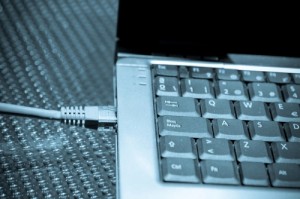Leased Line Speed Test Tips - How To Check The Speed Of Your Connection
Need to run a leased line speed test? Here's what you need to know:
How To Check Leased Line Speeds (simple option, may not always provide accurate results for leased line speeds above 10Mbps)
- To get the most accurate result, plug your laptop directly into the router provided by your leased line provider. If possible, run the test outside of standard business hours, so there aren't staff using the Internet connection at the same time as you.
- Visit a leased line speed testing tool such as https://www.speedtest.net/ (being careful to click on the speed test itself, rather than a similar-looking ad that tries to get you to scan your PC).
- Click Begin Test.
How To Check Leased Line Speeds (far more accurate, but not quick or convenient)
- Contact your existing leased line provider, and get them to schedule a speed test.
- At the scheduled time, your leased line provider will connect a laptop running iperf (or similar network-monitoring tools) to their end of your leased line.
- At the scheduled time, you (or your leased line provider) will connect a laptop running iperf to your end of the leased line.
- You'll probably want to run a series of tests. You'll want to co-ordinate the tests so that for any given test, one of the laptops is running iperf as a server, and the other is using it as a client.
Both laptops will need suitably fast Network Interface Cards, so the NIC cards don't create bottlenecks.
Bear in mind that your 'leased line [access circuit] speed' may not match the speed at which you experience the Internet. Most Internet traffic that flows through your leased line doesn't just travel from your office to your leased line provider (or vice versa). It travels beyond your leased line provider's network, on to the wider Internet.
It connects to the wider internet using peering links, and links provided by IP transit providers. Congestion on these links can slow down Internet traffic, so that your leased line appears to be slower than it really is. That's why the result of many online 'speed checkers' aren't always useful when judging the speed of leased lines.
This is particularly true when you're running tests on leased lines that connect at speeds of over 10Mbps.
You will probably want to run the speed tests outside of business hours, to avoid disruption.
You may be charged for such tests, if they involve a visit to your site by your leased line provider.

Want your leased line speed test to be accurate? If so, run the test from a laptop that's directly connected to your leased line provider's router.
Why Your Leased Line Speed Test Might Show Lower Than Expected Speeds
- Other users in your office may be using the same Internet connection at the same time as you, hogging some of the available bandwidth.
- The traffic on your leased line might be prioritised. VoIP telephony calls, video conferencing streams or backup-related traffic may have been given a higher priority than the general internet access you're using to test your connection speed.
- If your organisation allows employees to connect to the office network from home, bear in mind that some of them may be doing so. As they download and save files, they use bandwidth on your LAN, even though you can't see them in the office.
- The network interface card on your computer may be too slow to test the connection. 100Mbit/s is still a very common speed for network interface cards. If you're testing a 200Mbit/s leased line from a computer connected with a 100Mbit/s network card, you're only going to see throughput of around 100Mbit/s. To test speeds higher than 100Mbit/s you will need to run the test from a computer with a modern Network Interface Card i.e. one that's capable of transmitting data at 1Gbit/s.
- Traffic on your LAN that has nothing to do with internet access could be reducing the throughput between the computer you're running the test from and your leased line provider's router
- Your firewall could be the bottleneck, though this is unlikely.
- Perhaps you've connected wirelessly, rather than through an ethernet cable? If so, grab an ethernet cable and re-run the test through a wired connection.
- Your leased line provider might have 'oversold' bandwidth or Internet transit, leading to network congestion.
- If you upgraded from one bandwidth to another, it's possible your ISP might have forgotten to change the bandwidth throttling on your connection.
What To Do If You're Unhappy With The Speed Of Your Leased Line
- Follow step 1 above, checking the speed directly from your Leased Line Provider's router. If the speed from there is fine, the bottleneck is within your Local Area Network. Any competent IT Support firm will be able to help you fix this.
- Try running the test at different times of the day. Is the result slow at all times, or just at certain times of the day?
- Report the fault to your leased line provider.
- If you're out of contract on your leased line, or will be shortly, check out your options using our leased line price checker.







